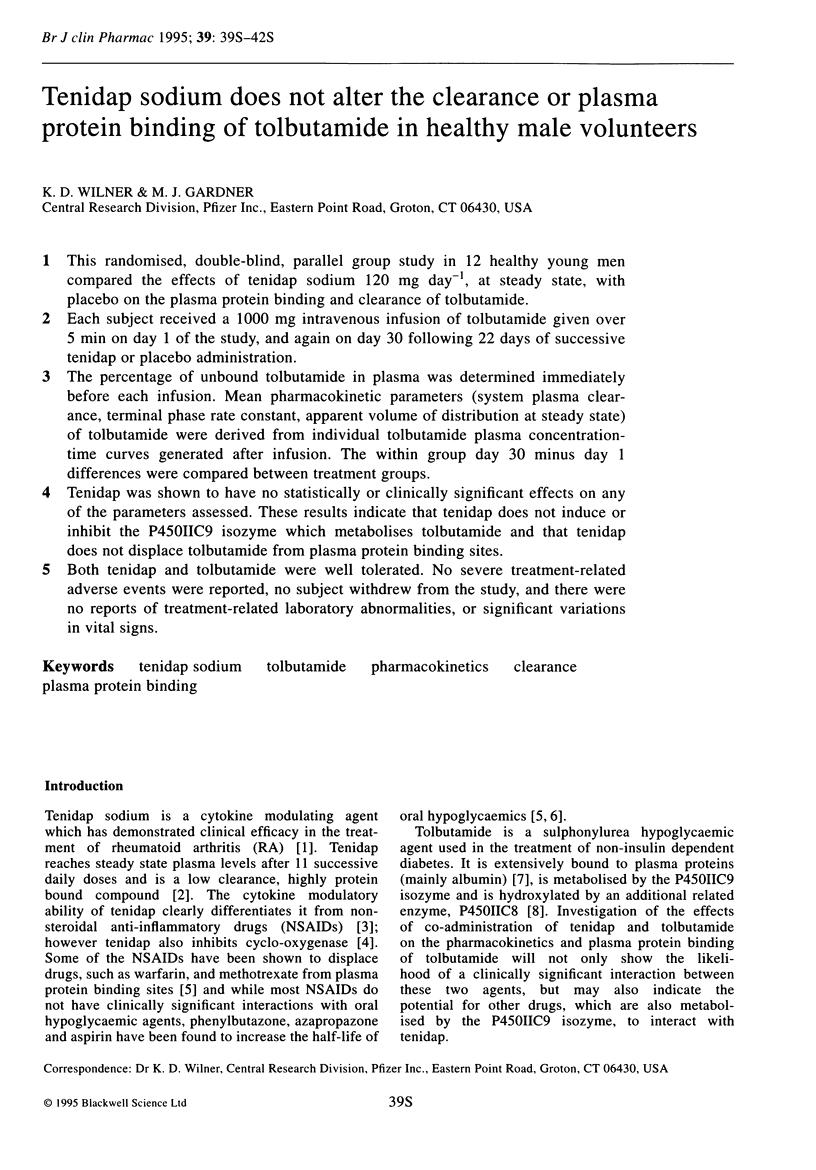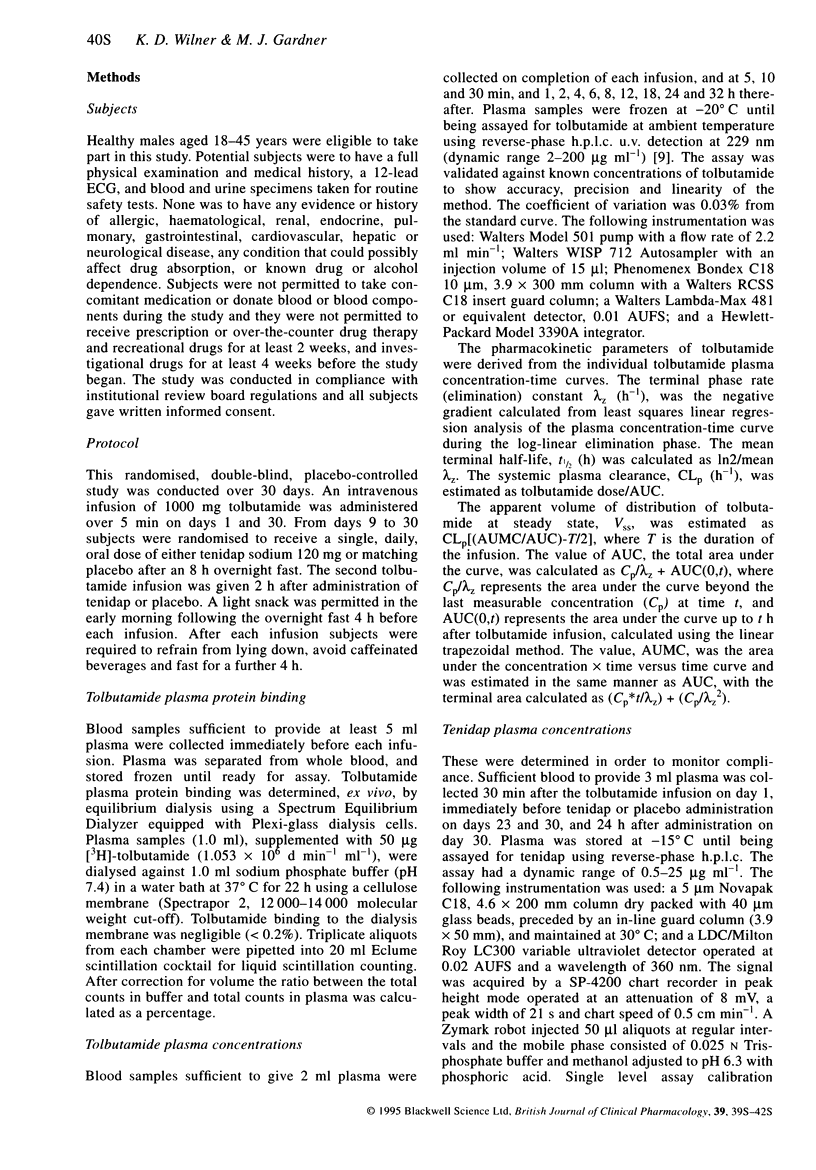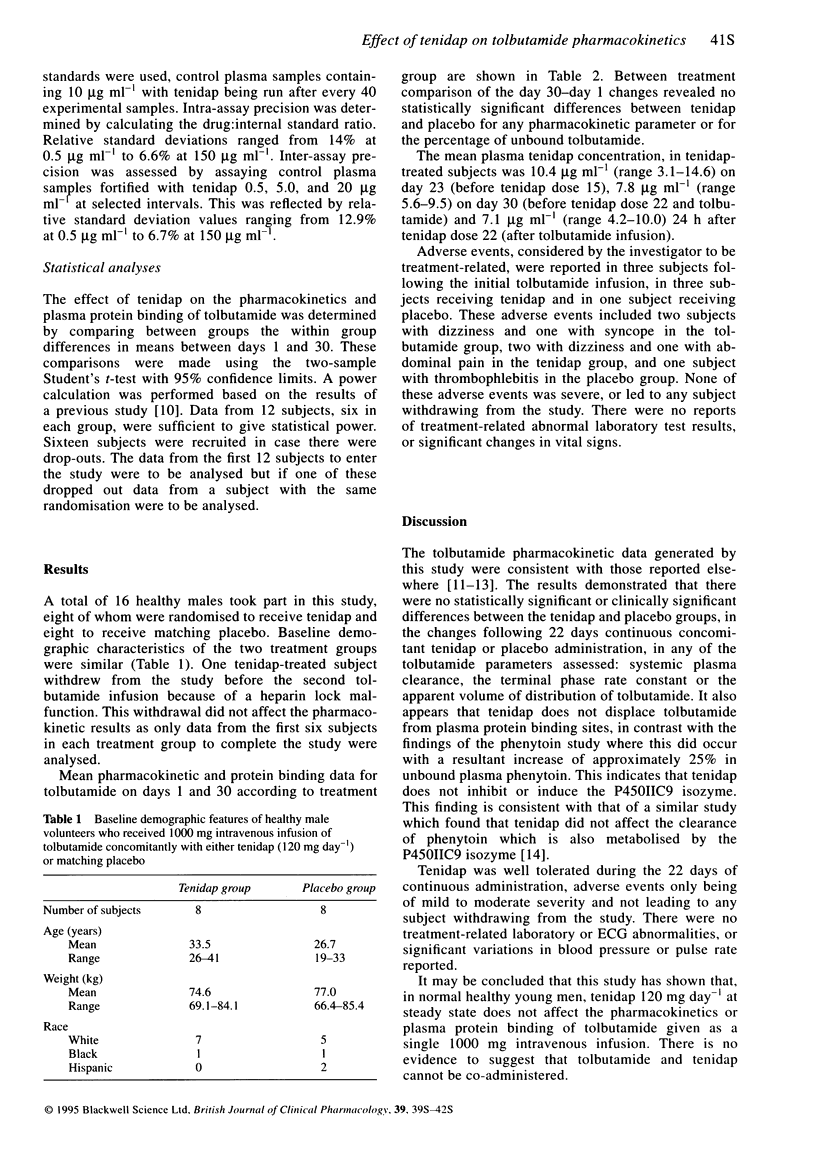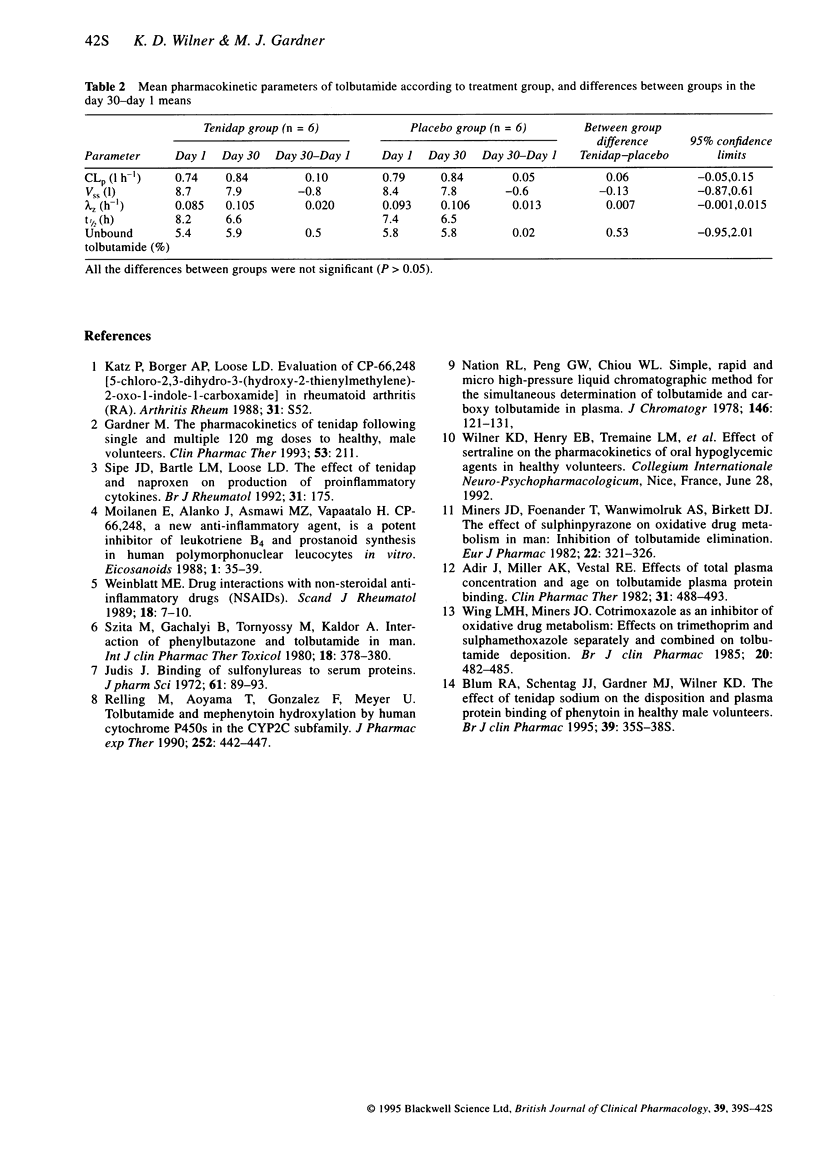Abstract
1 This randomised, double-blind, parallel group study in 12 healthy young men compared the effects of tenidap sodium 120 mg day-1, at steady state, with placebo on the plasma protein binding and clearance of tolbutamide.
2 Each subject received a 1000 mg intravenous infusion of tolbutamide given over 5 min on day 1 of the study, and again on day 30 following 22 days of successive tenidap or placebo administration.
3 The percentage of unbound tolbutamide in plasma was determined immediately before each infusion. Mean pharmacokinetic parameters (system plasma clearance, terminal phase rate constant, apparent volume of distribution at steady state) of tolbutamide were derived from individual tolbutamide plasma concentrationtime curves generated after infusion. The within group day 30 minus day 1 differences were compared between treatment groups.
4 Tenidap was shown to have no statistically or clinically significant effects on any of the parameters assessed. These results indicate that tenidap does not induce or inhibit the P450IIC9 isozyme which metabolises tolbutamide and that tenidap does not displace tolbutamide from plasma protein binding sites.
5 Both tenidap and tolbutamide were well tolerated. No severe treatment-related adverse events were reported, no subject withdrew from the study, and there were no reports of treatment-related laboratory abnormalities, or significant variations in vital signs.
Keywords: tenidap sodium, tolbutamide, pharmacokinetics, clearance, plasma protein binding
Full text
PDF



Selected References
These references are in PubMed. This may not be the complete list of references from this article.
- Adir J., Miller A. K., Vestal R. E. Effects of total plasma concentration and age on tolbutamide plasma protein binding. Clin Pharmacol Ther. 1982 Apr;31(4):488–493. doi: 10.1038/clpt.1982.65. [DOI] [PubMed] [Google Scholar]
- Blum R. A., Schentag J. J., Gardner M. J., Wilner K. D. The effect of tenidap sodium on the disposition and plasma protein binding of phenytoin in healthy male volunteers. Br J Clin Pharmacol. 1995;39 (Suppl 1):35S–38S. doi: 10.1111/j.1365-2125.1995.tb04500.x. [DOI] [PMC free article] [PubMed] [Google Scholar]
- Judis J. Binding of sulfonylureas to serum proteins. J Pharm Sci. 1972 Jan;61(1):89–93. doi: 10.1002/jps.2600610116. [DOI] [PubMed] [Google Scholar]
- Miners J. O., Foenander T., Wanwimolruk S., Gallus A. S., Birkett D. J. The effect of sulphinpyrazone on oxidative drug metabolism in man: inhibition of tolbutamide elimination. Eur J Clin Pharmacol. 1982;22(4):321–326. doi: 10.1007/BF00548400. [DOI] [PubMed] [Google Scholar]
- Moilanen E., Alanko J., Asmawi M. Z., Vapaatalo H. CP-66,248, a new anti-inflammatory agent, is a potent inhibitor of leukotriene B4 and prostanoid synthesis in human polymorphonuclear leucocytes in vitro. Eicosanoids. 1988;1(1):35–39. [PubMed] [Google Scholar]
- Nation R. L., Peng G. W., Chiou W. L. Simple, rapid and micro high-pressure liquid chromatographic method for the simultaneous determination of tolbutamide and carboxy tolbutamide in plasma. J Chromatogr. 1978 Jul 1;146(1):121–131. doi: 10.1016/s0378-4347(00)81296-7. [DOI] [PubMed] [Google Scholar]
- Relling M. V., Aoyama T., Gonzalez F. J., Meyer U. A. Tolbutamide and mephenytoin hydroxylation by human cytochrome P450s in the CYP2C subfamily. J Pharmacol Exp Ther. 1990 Jan;252(1):442–447. [PubMed] [Google Scholar]
- Smith G. M., Ward R. L., McGuigan L., Rajkovic I. A., Scott K. F. Measurement of human phospholipase A2 in arthritis plasma using a newly developed sandwich ELISA. Br J Rheumatol. 1992 Mar;31(3):175–178. doi: 10.1093/rheumatology/31.3.175. [DOI] [PubMed] [Google Scholar]
- Szita M., Gachályi B., Tornyossy M., Káldor A. Interaction of phenylbutazone and tolbutamide in man. Int J Clin Pharmacol Ther Toxicol. 1980 Sep;18(9):378–380. [PubMed] [Google Scholar]
- Weinblatt M. E. Drug interactions with non steroidal anti-inflammatory drugs (NSAIDs). Scand J Rheumatol Suppl. 1989;83:7–10. doi: 10.3109/03009748909101471. [DOI] [PubMed] [Google Scholar]
- Wing L. M., Miners J. O. Cotrimoxazole as an inhibitor of oxidative drug metabolism: effects of trimethoprim and sulphamethoxazole separately and combined on tolbutamide disposition. Br J Clin Pharmacol. 1985 Nov;20(5):482–485. doi: 10.1111/j.1365-2125.1985.tb05102.x. [DOI] [PMC free article] [PubMed] [Google Scholar]


